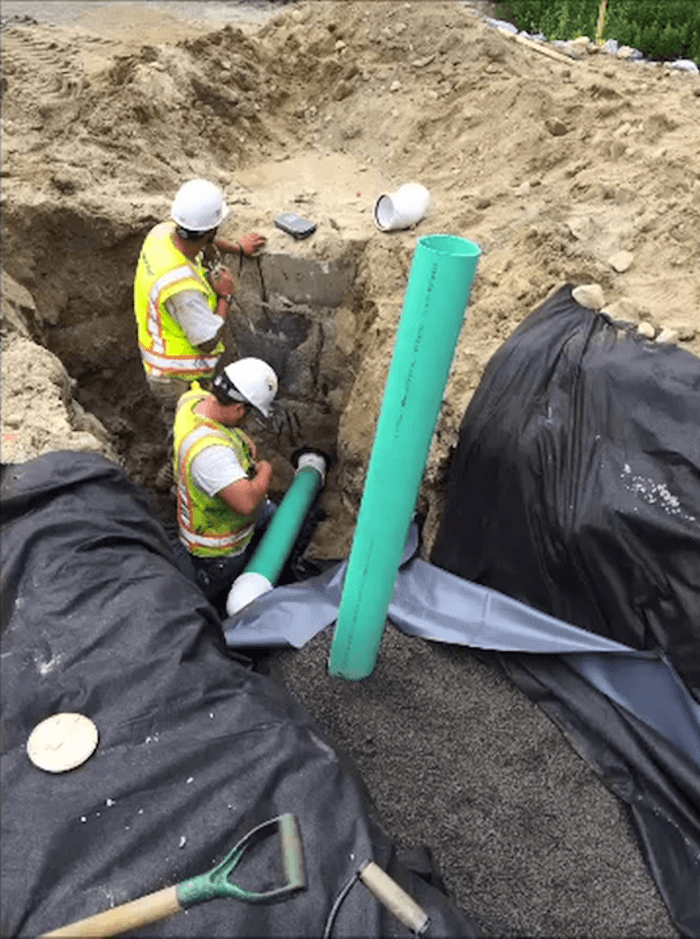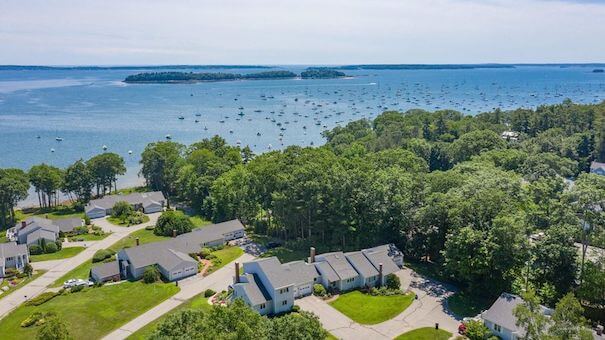The Falmouth Route 1 infrastructure project was designed to make the town’s commercial corridor more pedestrian and environmental friendly. An 11.7 million dollar bond was approved by voter-referendum in June 2013, publicly bid in the Spring of 2014 and awarded to Sargent Corporation, a well-respected contractor headquartered in Stillwater, ME.
The Town and the Engineer of Record (Fay Spoffard & Thorndike of South Portland, ME) specified a high performance modular biofiltration system in sixteen locations along Route 1. Because the system utilizes high rate biofilter media (100”/hr) and boxless/open top design, the system provides cost, footprint and installation efficiencies over traditional bioretention designs

On track to be completed in the summer of 2015, The FocalPoint High Performance Modular Biofiltration System has been specifically developed to lead by example by providing a systematic framework within our specification, designed to raise standards for all bioretention implementation, in construction quality control and quality assurance, reliability, long-term performance and lifecycle vendor commitment.
Fabco Industries is an exclusive sub-distributor to ACF Environmental of Richmond, VA. FocalPoint is developed and licensed byConvergent Water Technologies of Houston, TX.
Biofiltration System Reference
Water for agricultural uses including aquaculture is a limited resource in most places. In Hawaii as in other island locations, water conservation and optimal use of the available resource will be increasingly important as population grows and businesses develop (Leone 2003, New Internationalist 2003). Biofiltration systems reduce consumptive water use and waste discharge in aquaculture systems, often dramatically, but business operators may lack the capital or otherwise hesitate to make the initial investment. Commercial systems can appear and sometimes be complex.
Low cost systems serve to demonstrate principles, structure, and function. They provide encouragement to observers that a system can be operated conveniently and that investment will be recovered within a reasonable time. This bulletin describes the approaches and demonstration systems developed for aquaculture extension efforts in Hawaii during recent years. The primary purpose of these demonstrations is to show possibilities that are immediately applicable for existing businesses or for readily-envisioned developments among our clientele.
No attempt has been made to review this large field of endeavor nor to make a comprehensive test of possible approaches. We welcome information from readers of this bulletin to improve this document for future editions. Water Use and Conservation Potential Recirculating biofiltration technology does not aim to completely eliminate addition of new water or discharge of used water during a crop production cycle. The primary purpose is to keep concentrations of total ammonia nitrogen (TAN) low with minimal cost for water replacement.
During a recent workshop session in Hawaii, Tom Losordo of North Carolina State University defined “closed” recirculating systems as those in which up to 20% of the water volume is exchanged for new water each day, with 5 to 10% being typical.
These percentages are minimal and necessary in systems that remove settleable or filterable solids, in addition to processing ammonia. Non-recirculating culture systems use various amounts of new water during production, depending on stocking density and the degree of ammonia processing and other support by natural or artificial processes.
Fishes and shrimps can be grown in earthen Page 2 ponds without discharge of used water during the entire crop production cycle under some conditions. However, replacement of evaporation losses may require addition of water at a rate of 1 to 3 percent or more of the pond volume per day. In nonrecirculating (flow-through) tank systems, considerable water exchange is required to dilute the ammonia produced by the fish at most commercially useful stocking densities. For example, we took a biofilter offline for a few days’ modification during one of our recent trials in Hilo, in which we were maintaining a tilapia stock at 5-6 kg/m3 in a 2.4 m diameter tank in the greenhouse.
The biofilter had been maintaining ammonia concentrations below 0.3 ppm, with water exchange of only about 10% per week. Without the biofilter, a flow rate of about 7 liters per minute of new water (more than 200% per day volume exchange) was necessary to prevent ammonia concentrations from increasing, even at this commercially modest stocking density. Considering only the need for ammonia removal, the biofilter was saving more than 9 m3 of water per day.
At recent public water rates in Hawaii County, this amounts to a cost of $4.23 per day or about $127 per month, which would amount to a significant fraction of the production costs and market value of the crop. Demonstration Systems in Hawaii Seven different recirculating biofiltration systems are described here (Table 1). The performance of 5 of these was assessed during support of working culture systems.
The designs are mostly adaptations of wellknown strategies, made by the authors of this document. In one case, a creative adaptation of a commercial system was given to us by colleagues as noted in the Acknowledgments. These are “small-scale” systems, meaning in this case that the filter container volumes ranged from 20-125 liters (e.g., 5 gallon buckets, 33 gallon plastic trash cans).
The supported culture volumes ranged from 0.6 to 8 m3 . The systems are labeled in Table 1 as “Outdoor” and “Indoor,” indicating our particular test conditions; the designs are adaptable to many settings. Quantitative assessments are reported here to lend credence to the workability of these approaches, but the results should not be taken as definitive or limiting. All of the systems can readily be improved upon and adapted to new uses, including use of multiple filter units or much larger containers to support larger culture units.

